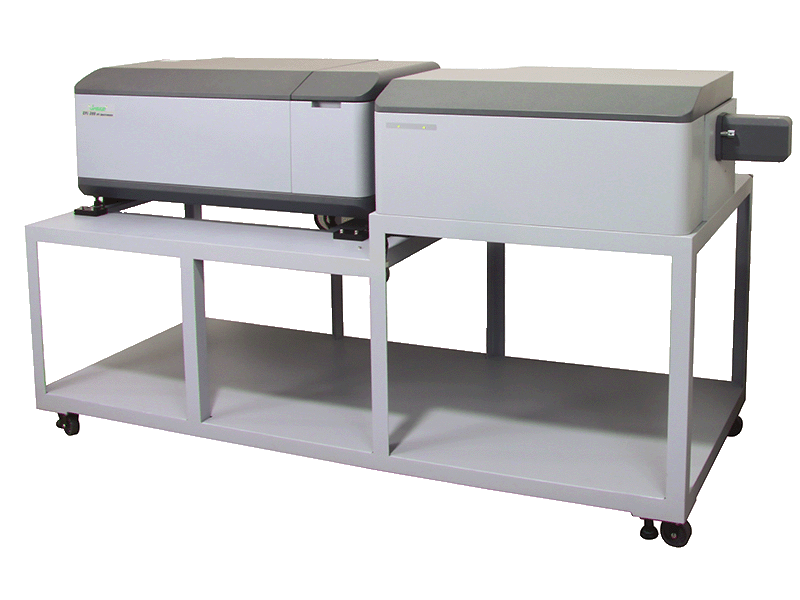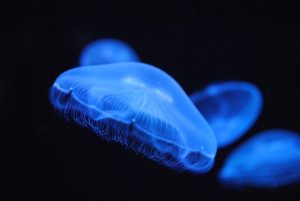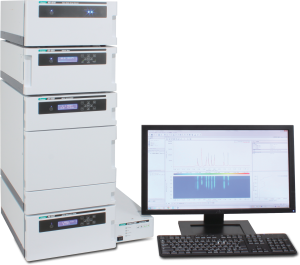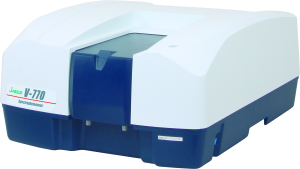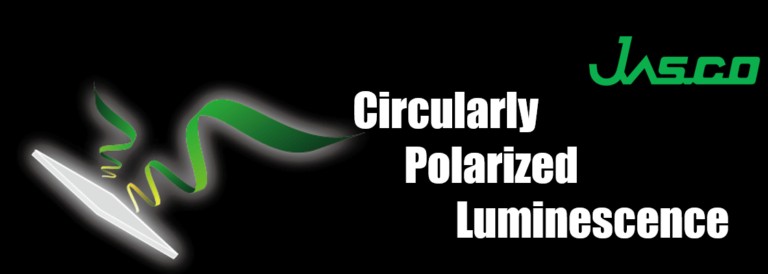
Circularly polarized luminescence (CPL) offers different and complementary information to other chiroptical techniques such as Optical Rotatory Dispersion (ORD), Circular Dichroism (CD), Vibrational Circular Dichroism (VCD), and Raman Optical Activity (ROA), since it reflects the structural properties of the excited state. CPL signal itself is the intensity difference between left and right circularly polarized light emitted by a chiral molecule.
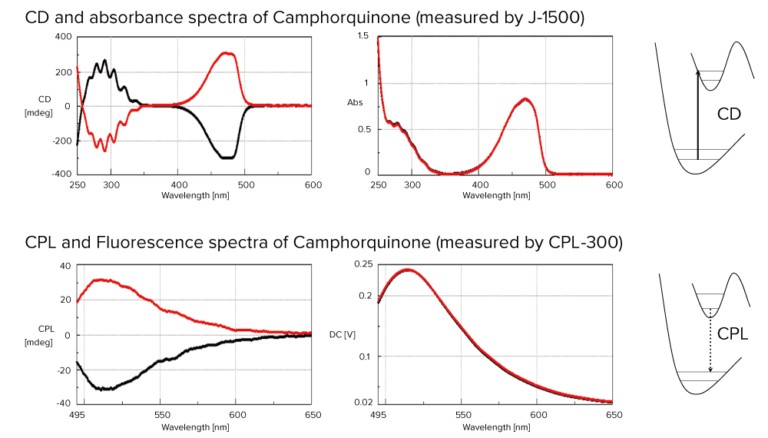
In recent years, CPL spectroscopy has been attracting attention as analytical method for circularly polarized light-emitting molecular which is expected to be applied to 3D display and other cutting-edge technology. Conventionally, CPL measurement has mainly been applied to solution sample researches, however this analytical method and application have been expanded to solid-state samples researches including magnetic field dependence and its temperature dependence.
We would like to introduce our CPL system CPL-300 and its applications to contribute to various different researches.
Measurement of solution sample
CPL spectra of camphor/EtOH solution are shown as below. It took about 24 minutes for the measurement (time of one scan was 4 minutes), and it means that CPL-300 can provide the meaningful information in short time.
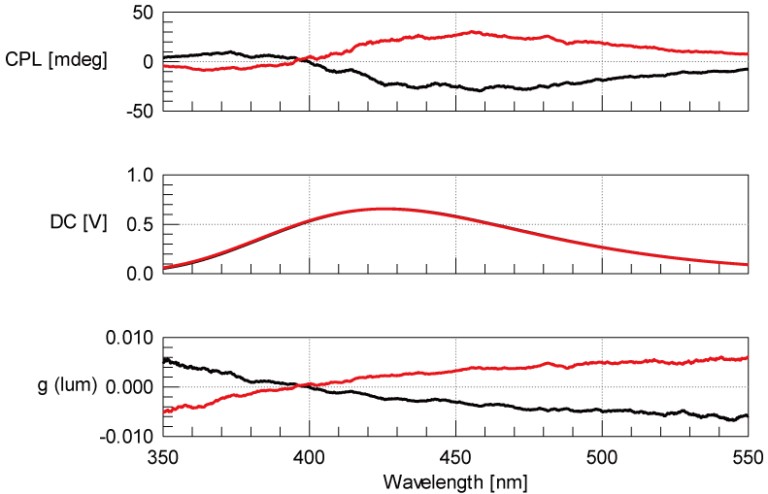
(Data interval: 0.2 nm, Measurement time: 24 min., No smoothing)
Measurement of solid-state sample
Some chiral molecules have different chiral properties in solution and in solid-state. In research application of device technology using circularly polarized light-emitting molecules, it is very important to evaluate CPL characteristics in solid-state.
CPL-300 has an original optical design of 180 degrees linearly arranged unpolarized excitation light, which makes it possible to eliminate artifacts due to fluorescence anisotropy1). Because such optical design can eliminate the effect from fluorescence anisotropy of samples like as KBr pellets and PMMA films, CPL spectra of samples in KBr pellets and PMMA films are reported 2,3,4). CPL measurement applications about samples with macroscopic anisotropy such as single crystals are reported from Kuroda et al using a dedicated CPL spectrometer5). However, we JASCO reported a case of solid-state sample that can be measured by CPL-300 spectrometer6).
Various accessories
Solid-state sample holder
We have a dedicated sample holder for KBr pellets and film samples and can provide a custom- designed holder depending on sample size (reference article).
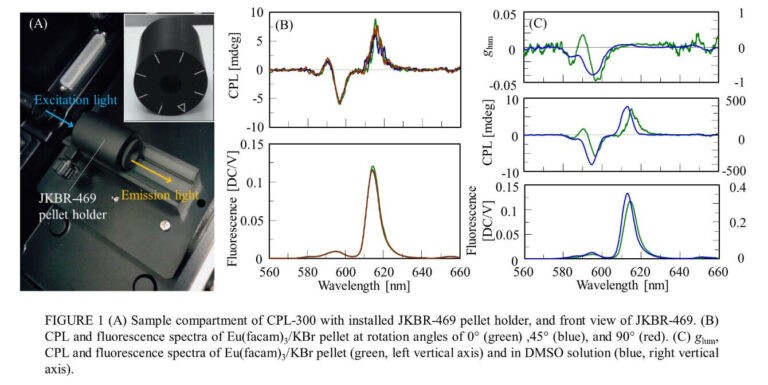
Temperature control measurement
In application of circularly polarized light-emitting molecules concerning device researches, it is essential to evaluate the temperature dependence of CPL characteristics 7,8). The Peltier cell holder of CPL-300 is common accessory with J-1500 CD spectrometer, which is useful for evaluating the temperature dependence of CPL characteristics with ease (reference article).
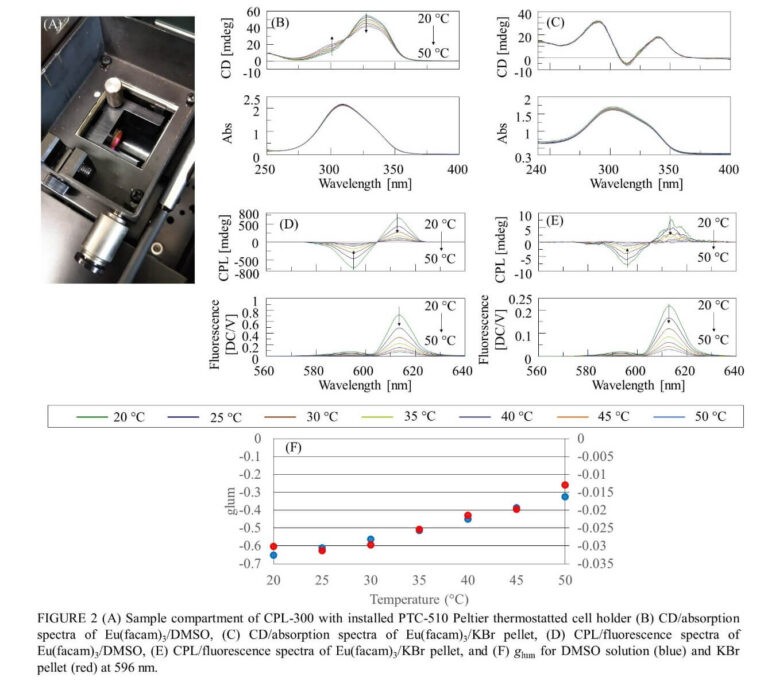
Magnetic CPL
Magnetic CPL (MCPL) applications about samples as PMMA-film, KBr pellets, and powder state are reported as Imai and Fujiki et al.9,10).
Inside of sample compartment of CPL-300, it is possible to set the direction of magnetic field as parallel as the direction of measurement light, which design can make MCPL measurement easily.
The magnet accessory can be used with J-1500 commonly, it can be useful complementary analysis as MCD and MCPL.
References
(1) Blok, P. M. L., and Dekkers, H. P. J. M. (1990). Measurement of the circular polarization of the luminescence of photoselected samples under artifact-free conditions. Appl. Spectrosc. 44, 2, 305-309
(2) Kimoto, T., Amako, T., Tajima, N., Kuroda, R., Fujiki, M., and Imai, Y. (2013). Control of solid-state circularly polarized luminescence of binaphthyl organic fluorophores through environmental changes. Asian J. Org. Chem. 2, 404-410. doi: 10.1002/ajos.20130034
(3) Nakabayashi, K., Amako, T., Tajima. N., Fujiki. M., and Imai, Y. (2014). Nonclassical dual control of circularly polarized luminescence modes of binaphthyl-pyrene organic fluorophores in fluidic and glassy media. Chem. Commun. 50, 13228-13230, doi: 10.1039/c4cc02946a
(4) Taniguchi, A., Kaji, D., Hara, N., Murata, R., Akiyama, S., Harada, T., et al. (2019). Solid-state AIEnh-circularly polarized luminescence of chiral perylene diimide fluorophores. RSC Adv. 9, 1976-1981, doi: 10.1039/c8ra09785b
(5) Harada, T., Kuroda, R., and Moriyama, H., (2012). Solid-state circularly polarized luminescence measurements: Theoretical analysis. Chem. Phys. Lett. 530, 126-131, doi: 10.1016/j.cplett.2012.01.059
(7) Okazaki, Y., Goto, T., Sakaguchi R., Kuwahara, Y., Takafuji, M., Oda R., et al. (2016). Facile and versatile approach for generating circularly polarized luminescence by non-chiral, low-molecular dye-on-nanotemplate composite system. Chem. Lett. 45, 448-450, doi: 10.1246/cl.060041
(8) Kumar, J., Nakashima. T., Tsumatori, H., and Kawai, T. (2014). Circularly polarized luminescence in chiral aggregates: Dependence of morphology on luminescence dissymmetry. J. Phys. Chem. Lett. 5, 316-321, doi: 10.1021/jz402615n
(9) Kaji, D., Okada, H., Hara, N., Kondo, Y., Suzuki, S., Miyasaka, M., et al. (2020). Non-classically controlled sign in a 1.6 tesla magnetic circularly polarized luminescence of three pyrenes in a chloroform and a PMMA film. Chem. Lett. 49, 6, 674-676, doi: 10.1246/cl.200136
(10) Yoshikawa, H., Nakajima, G., Mimura, Y., Kimoto, T., Kondo, Y., Suzuki, S., et al. (2020). Mirror-image magnetic circularly polarized luminescence (MCPL) from optically inactive EuIII and TbIIItris(β-diketonate). Dalton Trans., 49, 9588-9594, doi: 10.1039/d0dt01464h

